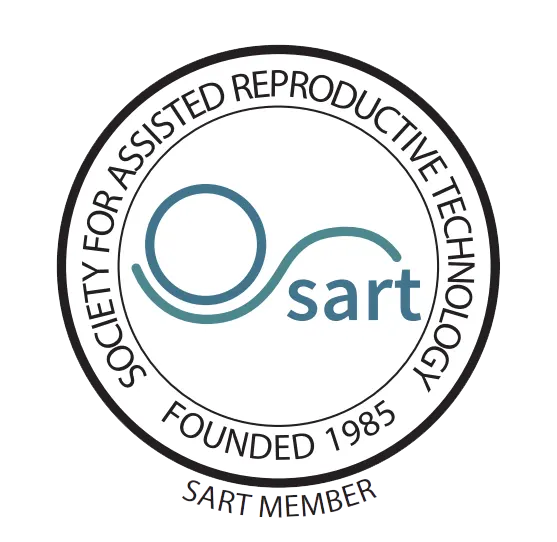What is Preimplantation Genetic Screening or PGS?
Preimplantation genetic screening (PGS) is a genetic testing procedure performed on embryos created with in-vitro fertilization by examining the chromosomes of an embryo for net gain or loss of genetic materials. Specifically PGS can identify chromosomal abnormalities such as
- Incorrect number of chromosome or aneuploidy – Aneuploidy is the presence of an abnormal number of chromosomes in a cell, such as having 45 or 47 chromosomes when 46 is expected in human cell. Examples of aneuploidy are:
- Down Syndrome with an extra copy of chromosome 21,
- Edwards Syndrome with an extra copy of chromosome 18.
- Translocation or rearrangement of one segment of chromosome onto another chromosome,
- Deletion or missing a segment of chromosome, or
- Sex-chromosome abnormalities including duplication or deletion of X and Y chromosome. Examples of sex-chromosome abnormalities include
- Klinefelter Syndrome with three copies sex chromosome, two X and one Y
- Turner Syndrome with only one copy of sex chromosome, one X
Who Should Consider PGS?
Because PGS screens embryos for chromosomal abnormalities, it identifies an embryo with normal chromosomal makeup with much greater precision than visual microscopic observation typically used in IVF. Hence PGS allows the selection of a normal embryo to be transferred and increase the likelihood of delivering a healthy baby.
Couples or individuals at increased risk for having embryos with abnormal chromosomes are best candidates for PGS. These include:
- Advanced maternal age (age 35 and older),
- Recurrent miscarriages, or
- Previous failed IVF attempt(s)
Other appropriate candidates for PGS are individuals or couples who desire
- Single embryo transfer to avoid multiple gestation,
- A desire to maximize the possibility of a healthy baby with IVF, or
- Family balancing
How Does PGS Work?
There are several testing methods to screen all 24 chromosomes, also called comprehensive chromosomal screening (CCS). Currently the most common methods for CCS are:
- Array-Comparative Genomic Hybridization or aCGH, and
- Next-Generation Sequencing or NGS with higher resolution by probing more data points may soon replace aCGH.
Both methods are performed on several cells from a day 5 or day 6 embryo, or less commonly on one or two cells from a day 3 embryo.
What are the Steps Involved in PGS?
The entire process of PGS consists of multiple steps, each step performed by different experts and laboratories.
- The first part is in-vitro fertilization (IVF) with either conventional IVF or intracytoplasmic sperm injection (ICSI) by which embryos are produced. Fertilized embryos are cultured for 3 to 5 days. This part occurs at Family Fertility Center.
- The second part is embryo biopsy. Embryo biopsy is performed on the third or fifth day of embryo development
- In Day 3 embryo biopsy, one to two cells are removed for testing, or
- In Day 5 embryo biopsy, several (3 to 6) cells are removed for testing.
Cells within a day 5 or day 6 embryo have separated into two types: cells which will form the fetus (inner cell mass) and cells which will form the placenta (trophectoderm). More cells can be removed at this stage (from the trophectoderm) without compromising the viability of the embryo, possibly leading to a more accurate test.
Embryo biopsy is done at the Family Fertility Center by our own staff.
- After the cells are biopsied and placed in test tubes, the tubes are transported by same-day overnight courier to outside reference laboratory for analysis.
- The analysis of the cell is performed by an outside reference laboratory. Currently Family Fertility Center sends its PGS specimens to the following reference laboratories:
- Igenomix (www.igenomix.com) in New York City, New York,
- Reprogenetics (www.reprogenetics.com) in West Orange, New Jersey,
- Genesis Genetics (www.genesisgenetics.org) in Plymouth, Michigan,or
- A reference laboratory as dictated by insurance plan.
- Usually it takes over 24 hours before the results are available. Hence freezing of the embryos using a rapid freeze method called vitrification is necessary. Freezing of the embryos takes place at Family Fertility Center.
- The final step, the thawing of a frozen embryo, typically a single embryo with normal PGS result, in subsequent cycle after the in-vitro fertilization procedure, and the transfer of the embryo back into the uterus is performed at Family Fertility Center.
Does PGS test for a specific genetic disease?
PGS test for chromosomal abnormalities only. Preimplantation genetic diagnosis or PGD tests for single gene mutations associated with genetically inherited disease, e.g. cystic fibrosis, sickle cell anemia, muscular dystrophy, Huntington’s Disease, Fragile X syndrome and many more.
What are the risks of PGS?
Most of the risks involved in PGS treatment are similar to those for conventional IVF. For more information on the risk of IVF, click here.
With PGS, there is also the possibility that:
- some embryos may be damaged by the process of cell removal,
- no or inconclusive result due to technical issues, or
- incorrect result because of chromosomal mosaicism in the embryo.
(Mosaicism is the presence of two or more populations of cell, each with different chromosomal composition, within the same embryo or individual).
What is the Chance of Having a Baby with PGS?
The chance of a successful outcome with PGS in conjunction with IVF treatment depends on whether any and how many of the embryos produced in an IVF cycle have a normal PGS result. Current data report a live birth rate between high 60% to 80% when an elective single frozen embryo is transferred in a subsequent cycle. These data are very encouraging as most women undergo PGS and IVF are at higher risk of producing chromosomally abnormal embryos such as advanced maternal age, previous IVF failures or recurrent pregnancy losses.
Sometimes, however, no embryos are suitable for transfer to the womb, for reasons including:
- Not enough eggs are produced or fertilized,
- Removing the cells to be analyzed damages the embryos, or
- All the embryos are aneuploid.
Is Prenatal Testing Necessary After PGS?
Because PGS is carried out on a minute amount of tissue, the test can never be 100% accurate. As there is a small chance of an incorrect diagnosis, it is strongly recommended that prenatal testing (for example amniocentesis or chorionic villus sampling – CVS) is used to confirm that the fetus has normal chromosomal makeup. Amniocentesis and CVS collect many thousands of cells from the fetus and are therefore more accurate.
Schedule a Consultation
Contact Us
If you are experiencing a medical emergency, call 911 or go to the nearest emergency room.
We understand you may have a lot of questions. Additionally, each couple or individual has a unique set of circumstances. To this end, the best way to get answers for your situation is a face-to-face consultation with our physician.
Schedule a Consultation
Contact Us
If you are experiencing a medical emergency, call 911 or go to the nearest emergency room.
We understand you may have a lot of questions. Additionally, each couple or individual has a unique set of circumstances. To this end, the best way to get answers for your situation is a face-to-face consultation with our physician.











